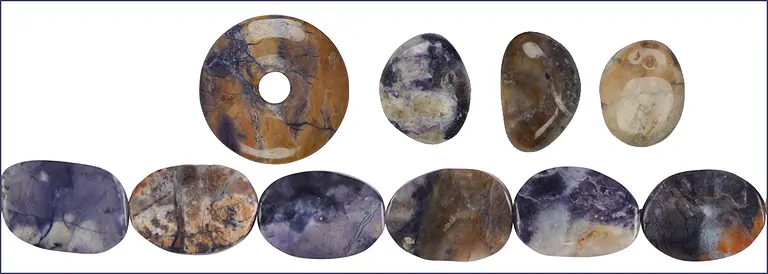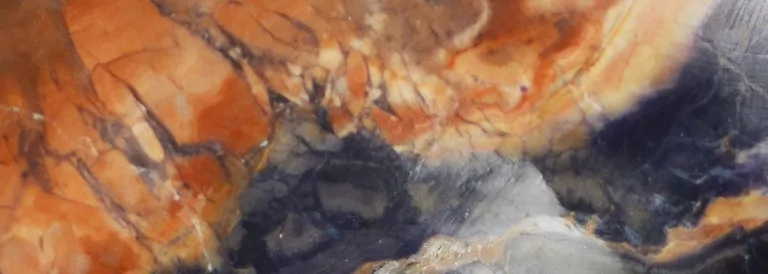Fluorite Opal (Tiffany Stone) - Meaning, effect and application
The Tiffany Stone consists mainly of opalized fluorite and was discovered in the early 1970s. The basic color is purple with yellow-brown areas as well as black beryllium veins. The beige-brown parts consist of jasper.
Usage uf Fluorite Opal in gemstone healing
The mineral combines the effects of the three components fluorite, opal and jasper. In modern stone healing, Tiffany Stone is used to promote playful freedom, lightness and gentleness; it strengthens intuition and presence in the here & now, makes inventive and reduces prejudices. With the support of fluorite opal, it is thus possible to enjoy the present, let yourself go relaxed and not always think of the (possible) consequences and maintain control.
Stringed beads, donuts, tumbled stones and more made of fluorite opal for retailer
Origin of the name Fluorite Opal
The purple stone got its name from Todd Harris, the foreman of the Brush Wellman Mine - the most famous locality of Fluorite Opal Jasper. He recognized the potential of the beautifully figured stone and felt that few people would remember "Bertrandite", the mineralogical name of the Tiffany Stone. After pondering for a while, he christened the stone "Tiffany Stone" - an elegant, easy-to-remember name in his opinion. Known synonyms for the tiffany stone are "Purple Passion" and "Purple Opal".

Mineralogical profile Fluorite Opal
Chemical formula, mineral class: CaF2
Evolution: The complicated formation of the fluorite opal is currently not yet conclusively clarified.
Color: purple with brown-beige matrix
Gloss: waxy luster
Crystal system: cubic (fluorite), amorphous (opal), triganol / secondary (jasper)
Moh hardness: 4
Splitness: uneven
Stroke color: White
Transparency: opaque
Occurrence: Utah (USA)
The now closed Brush Wellman mine is located in western Utah/USA. Beryl minerals were extracted from it for industrial purposes. Meanwhile, a second site for the Fluorite Opal Jasper is known nearby, the Spore Mountain Lavender Mines.
Appearance: coarse chunks

